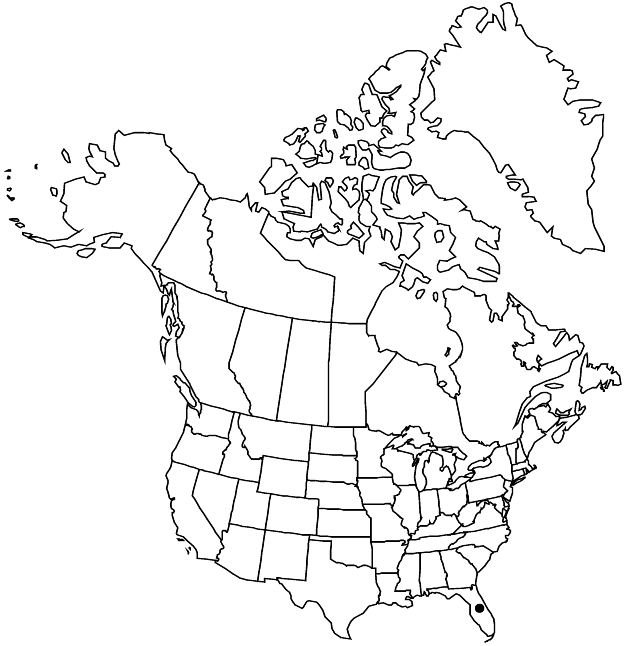Manilkara zapota
Blumea 7: 410. 1953 ,.
Trees, to 18 m. Leaves: petiole 10–30 mm; blade elliptic to oblongelliptic, 60–140 × 20–50 mm, base cuneate to attenuate, margins sinuate, apex acute to acuminate (often folded on pressed specimens), surfaces brown-tomentose along midrib or glabrous abaxially, glabrous adaxially. Inflorescences solitary flowers. Pedicels 10–20 mm, rufous-tomentose Flowers: sepals ovate to lanceolate, 7–10 mm, apex acute to obtuse, tomentose; petals white, unlobed or irregularly 2–3-lobed, margins entire to irregularly 3-dentate apically, glabrous or sparsely hairy, corolla 7–11 mm, tube 4–6 (–7) mm (equaling or exceeding lobes); staminodes petaloid; ovary hairy. Berries ellipsoid or depressed-globose to subglobose, 35–80 mm, surface roughened, scaly; pedicels slightly enlarged distally. Seeds 2–10, 15–25 mm. 2n = 26.
Phenology: Flowering year-round.
Habitat: Hammocks, disturbed areas, primarily in basic soils
Elevation: 0-5 m
Distribution

Introduced; Fla., Mexico, Central America, also in West Indies
Discussion
Manilkara zapota is thought to be native to the Atlantic and Pacific coasts of Belize, Guatemala, Mexico, and Nicaragua, and is widely cultivated elsewhere. In southern Florida, it is commonly cultivated and occasionally naturalized. The latex was the primary source of chicle, a major constituent of chewing gum before the substitution of synthetics. Mayans used the wood for lumber, but now the species is protected there in favor of preserving the fruits, which are highly prized.
Selected References
None.